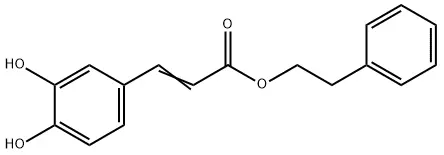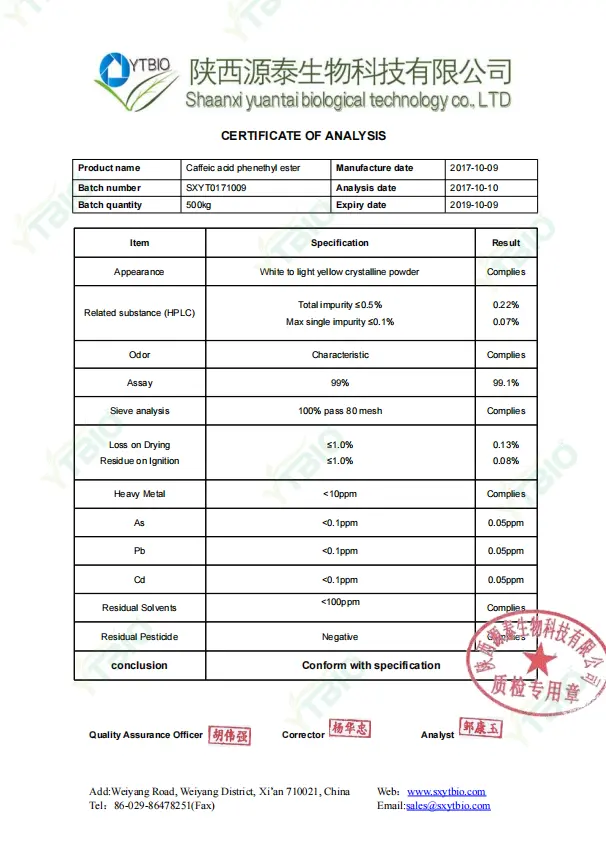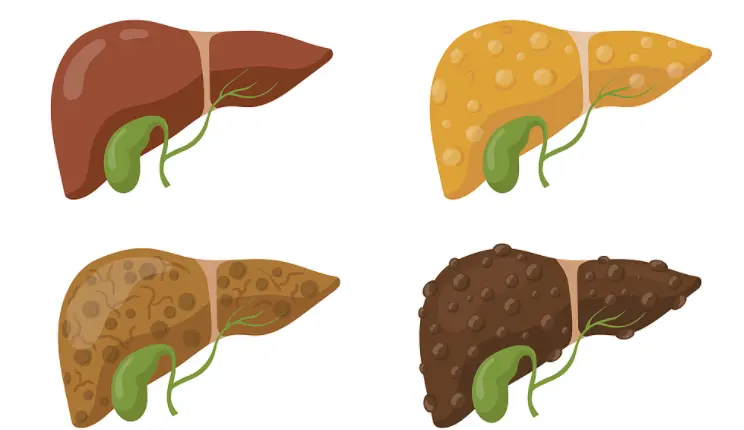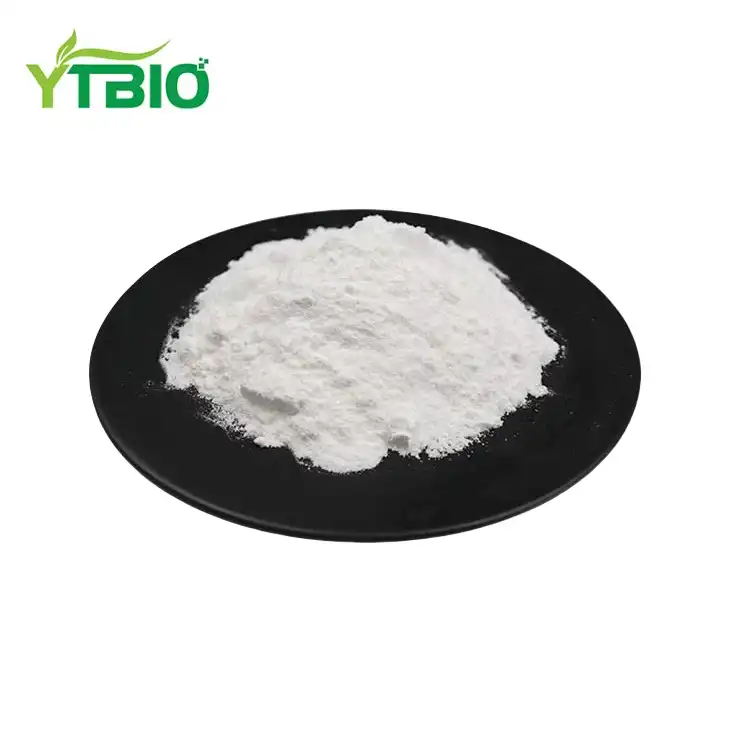Caffeic Acid Phenethyl Ester powder
Purity:99%
Detection Method: HPLC
CAS: 104594-70-9
Molecular Formula: C17H16O4
Molecular Weight: 284.31
EINECS: 627-151-0
Packaging: 25Kg/barrel
Delivery Speed:1-3 Days
Payment: T/T,VISA,XTransfer,Alipay
Certification: cGMP,ISO22000,ISO9001,EU&NOP Organic Certificate,Kosher,BRC,Halal,HACCP
- Fast Delievery
- Quality Assurance
- 24/7 Customer Service
Product Introduction
How much do you know about Caffeic Acid Phenethyl Ester Powder?
Caffeic Acid Phenyl Ester - Effective Ingredients from Propolis
Propolis, a natural substance collected and produced by bees, contains more than 20 categories and more than 300 chemical components, mainly including flavonoids, phenolic acids, terpenes, etc. Propolis has a wide range of biological activities, such as antibacterial, antifungal, antiviral, liver protection, cytotoxicity, and promotion of tissue regeneration. Propolis is widely used in health foods, medicines, animal husbandry and veterinary medicine, and clinical applications. In recent years, research has been conducted on the use of ulcers, heart diseases, and diabetes in the gastrointestinal system. Caffeic Acid Phenyl Ester Powder (CAPE) is a major active component in propolis, and exhibits unique physiological effects in anti-oxidation, anti-inflammation, and immune regulation.

Structural formula of CAPE
Some Synthesis method of Caffeic Acid Phenethyl Ester Powder
·Direct esterification method
The direct esterification method is to synthesize caffeic acid phenethyl ester by dehydrating caffeic acid and phenylethanol to form an ester under the action of a catalyst. Commonly used catalysts include SOCl2, DCC (N,N'-dicyclohexylcarbodiimide), HOBT (1-hydroxybenzotriazole), etc.
1.SOCl2 catalytic method:
Caffeic acid and phenylethanol are added to a reaction vessel, and an appropriate amount of SOCl2 is added as a catalyst. Under the protection of inert gas, heat to a certain temperature (such as 100°C) for reaction. After the reaction is completed, caffeic acid phenethyl ester is obtained through steps such as distillation, extraction, washing and drying.
2.DCC/HOBT catalytic method:
Caffeic acid, phenylethanol, DCC and HOBT are added to a reaction vessel. The reaction is carried out in an appropriate solvent (such as dioxane) at room temperature or under heating conditions. After the reaction is completed, caffeic acid phenethyl ester is obtained through steps such as filtration, washing, drying and recrystallization.
·One-pot synthesis method
The one-pot synthesis method uses 3,4-dihydroxybenzaldehyde as the starting material and obtains caffeic acid phenethyl ester through a series of reactions. This method has the advantages of simple steps and high yield.
Synthesis steps:
Add 3,4-dihydroxybenzaldehyde, phenylethanol and isopropyl malonate (or the intermediate synthesized from malonic acid and acetone) into the reaction vessel. Under the action of appropriate solvents (such as toluene) and catalysts (such as pyridine, piperidine), the reaction is carried out. After the reaction is completed, caffeic acid phenethyl ester is obtained through distillation, extraction, washing and drying.
·Other synthesis methods
In addition to the above two methods, there are many other synthesis methods that can be used to prepare caffeic acid phenethyl ester, such as the acyl chloride method, the β-phenyl bromoethane method instead of phenylethanol method, the phenylethanol first reacts with malonic acid to form a monoester and then reacts with 3,4-dihydroxybenzaldehyde through the Knoevenagel-Doebner condensation method, etc.
YTBIO:Caffeic Acid Phenethyl Ester Powder Supplier

Main effects of caffeic acid phenethyl ester powder
·Anti-inflammatory effectCaffeic acid phenethyl ester has significant anti-inflammatory effects. CAPE has anti-inflammatory effects on acute and chronic typical inflammation, formaldehyde-induced and antigenic enhancer-induced arthritis, edema inflammation or air sac inflammation induced by carrageenan and prostaglandin E2, and granuloma transplantation. This property makes it potential in relieving pain and swelling caused by inflammatory diseases such as arthritis.
·Antioxidant effect
As a powerful antioxidant, CAPE can scavenge free radicals and protect cells from oxidative damage, which helps prevent a variety of chronic diseases and may play a role in anti-aging processes.
·Immunomodulatory effect
CAPE also has immunomodulatory effects, which can change the cell structure of the immune organs thymus and spleen in the inflammatory body, while reducing the weight of the thymus, and CAPE can directly or indirectly reduce the number of T cells.
·Cardiovascular regulation effect
Caffeic acid phenethyl ester has the possibility of a dual mechanism of action on blood vessels. On the one hand, it activates NO release at low concentrations, and on the other hand, it can block the exchange of calcium ions inside and outside cells at high concentrations. These results suggest that CAPE and propolis have potential preventive value and can effectively avoid complications after resection of the thoracic and thoracoabdominal aorta.
·Neuroprotective effect
CAPE can counteract neurotoxicity and protect neurons from damage. This property makes it potentially useful in the treatment of neurodegenerative diseases such as Parkinson's disease.
·Other effects
CAPE can inhibit the activity of HIV-1 and the formation of reactive oxygen anions (superoxide) produced by the auto-oxidation of β-mercaptoethanol. CAPE also showed significant inhibition of xanthine oxidase activity and anti-lipid peroxidation.
Main application of Caffeic Acid Phenethyl Ester Powder
·Medicine
CAPE is often used as an auxiliary ingredient in the treatment of arthritis and inflammatory diseases due to its significant anti-inflammatory and neuroprotective effects. It helps relieve pain and swelling and improves the quality of life of patients by inhibiting inflammatory responses. The neuroprotective effect makes it effective in Parkinson's disease and Alzheimer's disease, and it may slow the disease process by reducing neuroinflammation and protecting neurons from damage.



·Health products
As a powerful antioxidant, CAPE helps to scavenge free radicals, protect cells from oxidative damage, enhance the body's immunity, and prevent chronic diseases.
·Cosmetics
CAPE is widely used in skin care products due to its ability to promote skin cell regeneration and repair. It helps to accelerate wound healing, improve skin condition, and make the skin healthier and more elastic. As an antioxidant, it can resist free radical damage to the skin, slow down the skin aging process, prevent the formation of wrinkles and spots, and is often used in anti-aging cosmetics. At the same time, C can enhance the skin's protection against ultraviolet rays, reduce skin damage caused by ultraviolet rays, and provide protection for the skin.
Does Caffeic Acid Phenyl Ester Powder in propolis have a liver-protecting effect?
Caffeic acid phenethyl ester powder (CAPE) in propolis has multiple biological activities. In recent years, there have been many studies on the liver-protecting effect of CAPE. The results show that CAPE can improve liver damage caused by various factors through anti-inflammatory and antioxidant methods.
CCl4-induced liver damage
Carbon tetrachloride (CCl4) is one of the commonly used toxic agents in the classic experimental liver damage model. It can cause liver damage and necrosis in experimental animals when entering the human body. Studies have shown that CAPE can significantly reduce the levels of these indicators in serum and the content of hepatic malondialdehyde after CCl4 induction. At the same time, histopathological observations show that CAPE can alleviate CCL4-induced liver lesions. CAPE treatment can normalize the levels of AST, ALT and ALP in serum, reduce hepatic lipid peroxidation, and significantly improve the content of GST, GSH and phospholipids in the liver.
In addition, CAPE treatment can also improve CCl4-induced genotoxicity and inhibit CCl4-induced α-smooth muscle actin (a-SMA) expression, indicating that CAPE has a certain protective effect on CCl4-induced liver fibrosis.
Drug-induced liver injury
Drug-induced injury is one of the common types of liver injury. The large intake of drugs will inevitably increase the burden on the liver. Once the liver's compensatory capacity is exceeded, the toxins will inevitably accumulate in the liver and damage liver cells in various ways.
CAPE can protect rats against TAM-induced liver toxicity by protecting the integrity of cell membranes, inhibiting lipid peroxidation, enhancing antioxidant enzymes and inhibiting liver inflammation. CAPE can also protect the liver by reducing reactive nitrogen and restoring glutathione levels.
Diabetic liver injury
As an important organ for sugar and lipid metabolism, the liver can produce liver diseases such as fatty liver, fatty hepatitis, and liver fibrosis in the diabetic state. Therefore, lowering blood sugar and blood lipids while alleviating liver oxidative stress and endoplasmic reticulum stress to reduce cell damage is of great significance for improving diabetic liver injury.
Using the diabetic rat model induced by uromycin, the effects of CAPE on the lipid peroxidation level and some antioxidant enzyme activities in the liver of diabetic rats were studied. The results showed that compared with the control group, the MDA content and antioxidant activity of diabetic rats increased significantly; CAPE could reduce the lipid peroxidation level of diabetic rats and restore MDA to normal levels.

Different liver injuries
Electromagnetic wave-induced liver oxidative stress
Although electromagnetic waves cannot directly cause organisms to produce free radicals, they can interfere with the dynamic balance of free radical metabolism in the body by affecting the distribution of free radicals and maintaining enzymes for free radical metabolism, thereby generating oxidative stress.
Studies have shown that CAPE can alleviate microwave-induced liver oxidative stress by upregulating the activity of antioxidant enzymes such as CAT and SOD. CAPE can reduce liver oxidative stress induced by electromagnetic fields of a certain intensity by reducing reactive oxygen and enhancing the activity of antioxidant enzymes.
Hepatic ischemia/reperfusion injury
CAPE reduces the increase of serum ALT and AST, restores glutathione levels, inhibits NF-κB activation and neutrophil infiltration, thereby reducing hepatocyte apoptosis and inflammation after ischemia-reperfusion.
Cold stimulation-induced liver injury
CAPE reverses the decrease in antioxidant enzyme (CAT, SOD, GSH-Px) activity and increase in MDA caused by cold stimulation or tobacco exposure, and improves liver tissue pathological changes.
Lipopolysaccharide-induced liver injury
The use of CAPE can reduce inflammatory factors and increase the level of anti-inflammatory factors, indicating that CAPE can reduce LPS-induced systemic inflammatory response and damage to hepatocytes and neurons by regulating the balance of pro-inflammatory and anti-inflammatory factors and inhibiting the expression of adhesion molecules.
Cholestatic liver injury
In the bile duct ligation model, CAPE reduces serum GGT, AST, ALT and liver tissue MDA and myeloperoxidase (MPO) levels, while increasing glutathione content and reducing cholestatic liver injury.
As a natural active ingredient, CAPE has shown significant protective effects in various liver injuries. The main mechanisms include inhibiting oxidative stress, reducing lipid peroxidation, enhancing antioxidant enzyme activity, regulating inflammatory response, improving cell apoptosis and metabolic disorders, etc. CAPE can exert liver protective effects through multiple targets and multiple pathways. The results show that CAPE has potential clinical application value.
If you have any questions or needs about our Caffeic Acid Phenethyl Ester Powder, please contact us at sales@sxytorganic.com. We will provide you with great service and products, and you can also learn more about our products from us. Looking forward to your inquiry.
_1737093401309.png)

